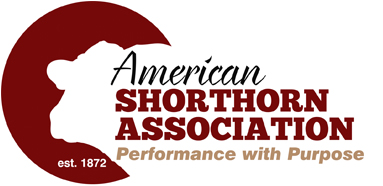Written by: Matt Woolfolk, ASA Director of Performance Programs
The topic of proper data reporting is one that is very important, yet also can be overwhelming and a hassle to many breeders. Sometimes, it’s difficult to know what to do when turning in your weights and data to ASA. I’ve learned that no matter how many times this topic gets covered, it’s usually not enough times! It’s been a couple years since we discussed this topic in the Shorthorn Country, so it might be time for a good review.
The best memory device I’ve seen to help with contemporary grouping is the acronym S.A.M.E.
S.A.M.E.: Sex, Age, Management, Environment. Simply put, cattle that are treated the same should be contemporary grouped the same!
A contemporary group (CG) is the largest it can ever be when you put them together during calving season. That makes it extra important to get your contemporary groups correct at birth to build on as the calves go through life. All the calves born in the same season should be grouped together, provided they were run under the same management. If one set of cows is on full feed while the others just grazed, then the calves from those cows should be split accordingly. When inputting calf data, Digital Beef will separate male and females calves into their own groups for you. You can use the “Season” dropdown menu to differentiate groups from each other within your herd (like the fed cow pasture vs the grazing pasture). The “A, B, C and D” designations don’t necessarily correspond to actual seasons, but rather are just a method to input your different groups the way they need to be.
It’s inevitable that animals will be removed from a contemporary group over time. Whether it’s a calf that gets sick and requires extra attention, or a couple calves are brought to the barn as show prospects, group those cattle that get treated differently than the rest as their own contemporaries. If you bring in a bull calf and start feeding him a show ration to prep for state fair, you would expect him to outweigh your calves that are on pasture and light creep. It would not be a fair representation of the data to keep him in the same CG as all his buddies that didn’t come to the show barn. The show calves would need to be removed from the main CG and separated into their own smaller group. Contemporary groups are not a “mix and match” task, where you can pull animals out and put them back in once they’re back in the same pasture again. Once an animal leaves a CG, it can’t go back to the old one. The bull calf you took to state fair can be turned out in the development lot with the other yearlings after his show career, but he remains in his own CG for data recording purposes.
Even if all your calves don’t grow and perform like you hoped, it’s important to submit the data on all calves, heavy and light. There’s a reason it’s called WHOLE Herd Reporting. It’s fairly common for cattlemen to not report their worst calves, because they don’t want to bring down the group average and have other breeders see their “bad” calves. If all the calves are treated the same, then ALL the calves should be reported, good, bad or ugly. If you are a WHR breeder, the assessment fee on your cows covers the registration of her calf, so choosing not to submit the poor calves is not really a way to lower your registration bills. If you don’t want to give the weaker calves a registration number, you can simply uncheck the “Register?” box when submitting calf data into Digital Beef, and the system will record your calves with a “U” number and not fully register them.
A pitcher who can throw an 87 mph fastball doesn’t look very good in the population of professional baseball players, where 95 mph throwers are pretty common. If you compare him to the entire population of men in the country, that 87mph heater looks pretty good again! That’s what happens when you don’t record those less than desirable calves in your crop. It doesn’t help your best show just how good they really are!
The chart below gives a visual example of how much effect removing the bottom can have on performance ratios, and in turn, EPD calculations.

For a contemporary group to be an effective sire evaluation tool, there needs to be more than one sire represented in the group. While you can still make comparisons of the individuals and their dams, a CG with only one sire doesn’t tell you very much on the bull. All the good performing calves are his, but so are all the bad ones! The best way to have multiple sires in a group would be to incorporate AI into your breeding program, then turn those cows out with a walking herd sire afterwards.
The task of contemporary grouping can be confusing, cumbersome, and downright boring for some breeders! However, proper CGs are also crucial and necessary for getting the best data possible into the Shorthorn genetic evaluation. As Shorthorn breeders, we should all want the best genetic evaluations possible. If you have questions or need assistance, please feel free to reach out and ask. The worst questions are the ones that are never asked.





![[ Random Image ]](/wp-content/themes/shorthorn/headers/header7.jpg)